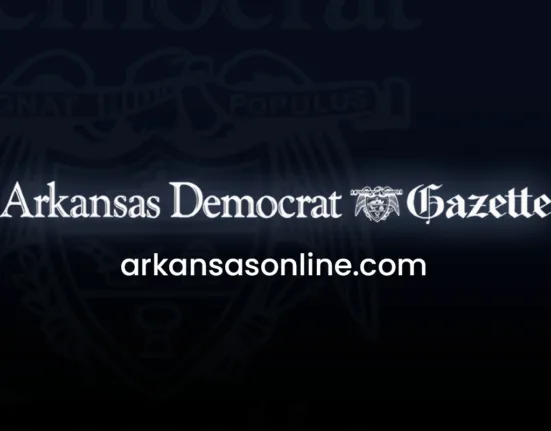This week saw the most significant developments to bring about an end to the Ukraine war since Russia invaded in February 2022.
A meeting between US and Russian officials in Saudi Arabia on 18 February covered a number of key areas, including restoring relations between the two superpowers and the role of Nato in any future security force in Ukraine.
The issue of territory is also likely to be critical to any settlement.
Russian forces are gradually advancing and currently control just under a fifth of Ukrainian land – and Moscow has given no indication of wanting to give any of it up. Indeed, this week Donald Trump publicly stated Russia had gained the “upper hand” in negotiations after taking “a lot of territory”.
Policy analyst Mark Temnycky has told Yahoo News that allowing Russia to keep the captured land would “upend international laws and norms, and it would cause greater chaos on an international level”.
How much Ukrainian territory does Russia control?
(please wait a moment for the map below to load)
Around 20% of Ukraine is currently controlled by Russian forces, who have captured territory in the south and east of the country.
Russia has said keeping control of these regions – including Crimea and the Donbas – is high on their agenda.
Russia seized and annexed Crimea in 2014, with Russian-backed separatists taking control of parts of the Donetsk and Luhansk areas of the eastern Donbas region later that same year. (This area can be seen outlined in black on the map above)
Following Russia’s full-scale invasion of Ukraine in February 2022, Putin’s forces have taken over a much larger portion of the east and south of the country, as shown in the map above.
Russia has also taken a smaller area of territory further north in Kharkiv, while Ukraine has made notable advances into Russia, capturing enemy territory in the Kursk region.
Territorial gains in this brutal war of attrition have been slow, with Russia and Ukraine fighting inch-by-inch to push back the frontline.
However, according to analysis published by experts at the Institute for the Study of War on 6 February (before the recent developments around negotiations), the war was not necessarily in a permanent form of stalemate.
“Either side can potentially restore manoeuvre and begin to gain or regain significant territory,” it said. “Russia will be able to do so if the West reduces or cuts off aid. Ukraine may be able to do so if Western support continues to empower Ukrainian innovation.”
What do Ukraine and Russia want?
Ukraine’s President Volodymyr Zelensky has been clear throughout the war that he is not willing to give up territory.
However, in a recent interview with the Guardian, he said he would be willing to hand back territory taken by his country’s forces in Russia’s Kursk region in exchange for Ukrainian land.
“We will swap one territory for another,” he said. Zelensky said he would have to wait and see what land the Russians would offer in return, adding: “All our territories are important, there is no priority.”
For obvious reasons, territory is likely to be a difficult sticking point for each side.
In June last year, Putin set out his red lines on territory saying Ukraine must withdraw its troops from the entirety of the territory of four Ukrainian regions claimed and mostly controlled by Russia.
Little seems to have changed in Moscow’s public stance since then with Russian foreign minister Sergei Lavrov saying the day before the Saudi meeting that there would be no talk of concessions.
“Territorial concessions to what is now called Ukraine were made by the Soviet leadership during the formation of the USSR,” he said. Heaping scorn on a proposal by Washington to give the US access to valuable minerals in exchange for military support, Lavrov added: “How should we give in – with Russian people or with rare earth metals?”
Last week Trump demanded $500bn (£397bn) in rare earths in exchange for US protection, saying: “We have to get something. We can’t continue to pay this money.”
However, according to Politico, Zelensky has refused to sign a draft agreement to hand over half of Ukraine’s rare earth minerals to American companies, with a US official admitting such a deal may fall foul of Ukrainian law. Zelensky has said the draft deal did not contain the security provisions that Kyiv needs.
Ukraine’s ambitions to someday join Nato are also likely to be a challenge during negotiations, with Russia citing the possibility of the military alliance expanding to its border as one of its reasons for starting the war.
With Trump in the White House, this prospect seems further out of reach, with US defence secretary Pete Hegseth saying last week that he does “not believe that Nato membership for Ukraine is a realistic outcome of a negotiated settlement”.
He also said he thought it would be unrealistic to expect a return to 2014 Ukrainian borders, calling this a “recognition of the hard power realities on the ground after a lot of investment and sacrifice”.
Following his phone call with Putin on 12 February, Trump also said he thought that could only expect “some” of the land taken by Moscow to come back, noting that Russian soldiers had “fought hard” and many had been killed.
This week, he said he thought Putin had already gained the upper hand in any peace talks
“We can make a deal with Russia to stop the killing,” he told the BBC on 20 February. “I think they have the cards a little bit because they’ve taken a lot of territory so they have the cards.”
What’s at stake?
One concern of Ukraine and Nato countries is that a “forced peace agreement” would give Russia time to regroup and prepare for another invasion, says Temnycky, a journalist and fellow at the Atlantic Council’s Eurasia Centre.
“Many Ukrainians believe that the Russians would then launch a future invasion of Ukraine,” the Ukrainian-American analyst tells Yahoo News. “This would bring greater devastation and destruction to Ukraine, and it would suggest that the Russians can invade their neighbours without consequence.”
Temnycky adds that Ukrainians fear allowing Russia to keep its occupied territory would reward it for its war – a concern shared by the Baltic States and Poland, who worry that such a concession could embolden Moscow to meddle in their affairs and possibly invade them in the future.
“It would also undermine the authority of the European Union and Nato, as giving up Ukrainian territory to Russia would suggest that the West failed to defend democratic values and traditions and that the West was too weak to stop an autocrat,” Temnycky adds.
He also suggests that Russia keeping occupied territory would send a signal to other authoritarian rulers “that they can invade neighbouring countries without consequence”.
Temnycky adds: “This would upend international laws and norms, and it would cause greater chaos on an international level. At that point, why would international rules need to be recognised?”
This threat is well recognised by Taiwan, whose then-foreign minister Joseph Wu said in May: “If Russia can do that to Ukraine, China might do the same to Taiwan.”







